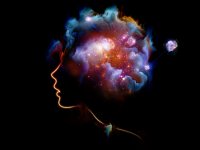What Brain Science Teaches Us About Conflict Resolution
When a teacher noticed her kids fighting at recess, she turned to neuroscience and mindfulness practice to help them take control of their emotions.
Your content has been saved!
Go to My Saved Content.Five years into teaching conflict resolution to elementary school students, Linda Ryden realized she was missing the mark.
“On the surface, it all looked good. But day after day I would see children, often some of our most vulnerable and troubled students, being sent to the office for fighting at recess,” Ryden, a peace teacher at Lafayette Elementary School in Washington, DC, writes for EdSurge. “Some of these kids would go straight from my classroom where we had been role-playing how to work out a conflict to the playground where they would get into a fight over who goes first on the swings.”
Despite all her work, Ryden concluded that her students simply couldn’t think clearly enough to make good choices when confronted with the actual moment of conflict. She went back to the drawing board, and found that the neuroscience of anger—the role of the amygdala in “hijacking” the brain’s higher-order skills, like self-control, for example—provided useful context for her students. Once they understood this framework, students quickly adopted the language of brain-based learning, Ryden says, with one student approaching her to insist that he was “all amygdala” and needed help with his self-regulation.
But understanding how anger works isn’t enough, Ryden knew. She had never been a meditator, she admits, “but as I was searching for ways to help my students I kept reading about mindfulness—in particular, breathing strategies that can calm us down in the moment. There isn’t much research about its impact on students, yet, but what is out there appears promising.”
The two strategies—the neuroscience of anger and the self-regulatory power of mindfulness—snapped together in a way that felt immediately useful. “Once I was able to teach my students what was happening in their brains when they were angry and how they could take care of their brains with mindful breathing, then working out the conflict was a breeze,” she says. “Giving my students these tools quickly began to change their lives, my life, and the climate of the school.”
Making It Tangible for Kids
To help her students understand what happens in their brains when they get angry, Ryden made a puppet using a mitten, googly eyes, and pompoms. The puppet is a tangible way to show her students what happens when their prefrontal cortex—the part of the brain responsible for thinking and executive function—goes offline when kids get angry and their amygdala—the part of the brain responsible for responding to threats and danger—takes over and begins making decisions for them. She realized this visual tool could be an important part of her practice after watching Daniel J. Siegel, a clinical professor of psychiatry at the UCLA School of Medicine, use his hand to demonstrate what happens in the brain when we get angry.
Once her students, beginning as early as first grade and continuing through fifth grade, gain a basic understanding of what’s happening in their brains, Ryden begins teaching tools they can use to literally calm their brains. She does this by teaching them different techniques for taking deep and calming breaths, such as take 5 breathing, for example. “Neuroscientists have found that the act of taking deep breaths sends a message to your amygdala that everything is OK, that your amygdala can stand down and let other parts of the brain take over,” Ryden says, noting that this is a simplified explanation of a very complex process. “Then you can deal with the problem that’s causing you to be upset.”
Integrating Mindfulness During the School Day
At Lafayette Elementary, Ryden says teachers give students opportunities twice a day for what she calls “mindful moments.” This daily frequency and repetition is important because teaching, learning, and practicing mindfulness isn’t a quick fix. “It takes a very long time for people to change their patterns and how they behave,” she says. In class, teachers refer to a poster with nine different ways for students to practice mindfulness. These include gravity hands (sitting with hands palms up, breathing in while slowly lifting hands, then breathing out while slowly dropping them, palms down) and squeeze and release (tensing up muscles while breathing in, relaxing muscles while breathing out).
“A lot of mindfulness practice isn’t about calming down,” says Ryden. “It can be applied to life’s challenges in so many ways. The goal shouldn’t be: ‘These kids are out of control, let’s get mindfulness in here.’ Rather, it should help you understand yourself better, how you think about things, and eventually, help make the world a better place.”
